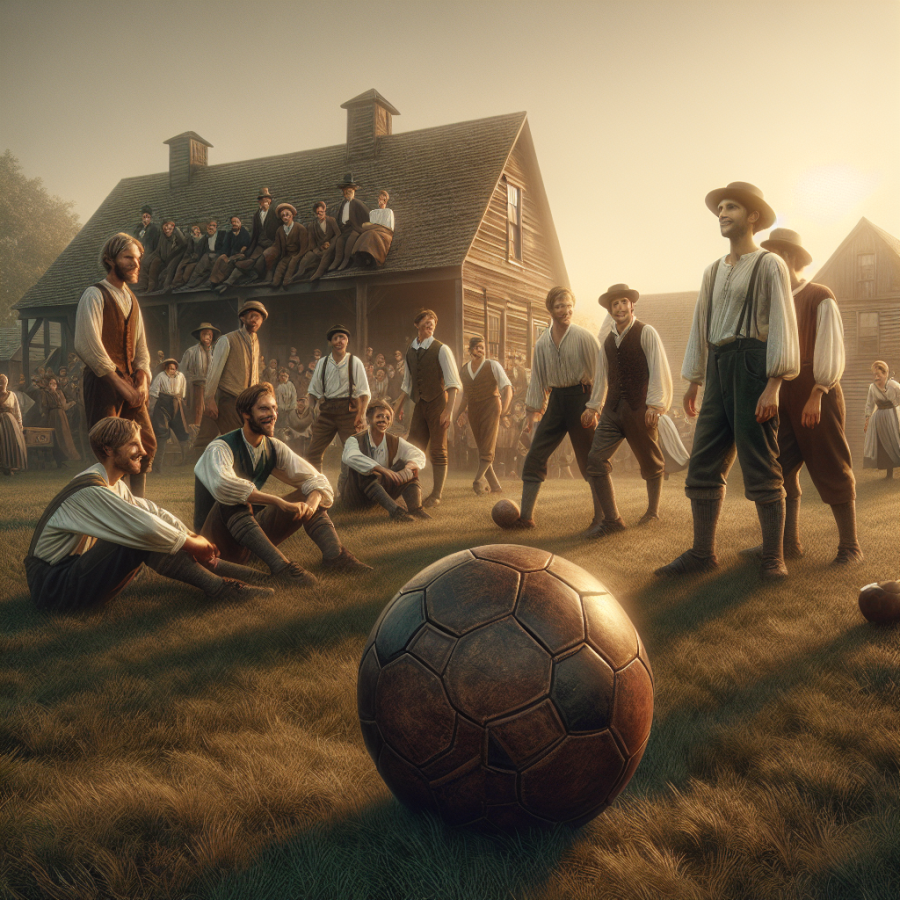Uncovering Soccer's Origins: A Journey through Time
Soccer, known as football to most of the world, is a sport brimming with a rich and fascinating history. This exploration aims to uncover the roots of the beautiful game and provide insight into how it has evolved over time.
One might argue that early precursors of soccer can be traced back to the third and second millennium BC, in ancient civilizations like China, Egypt, and Central America. However, these rudimentary games differ in form, features and rules from the modern game we know as soccer today.
In ancient China, a sport known as Cuju, literally 'kickball', emerged during the Han dynasty. Much like soccer, this game involved kicking a ball into a net without using hands. The main difference, however, was the use of a single, smaller net attached to a bamboo cane, rather than the large, rectangular goal common to modern soccer.
Similarly, the ancient Egyptians played a sport using a spherical ball, which was depicted in timeless murals and paintings. It bore a striking resemblance to modern soccer, including evidence of a structured playing field and team-based play.
Ancient Mesoamericans, particularly the Aztecs and Mayans, also played a form of 'ball game' involving a rubber ball. While it bore less resemblance to soccer (because it involved a semblance of basketball and volleyball rules), some soccer interpretation can still be seen within this ancient ritual game.
Moving forward, the beginning of soccer as a recognizably organized sport can be linked back to the medieval ages in Europe – particularly England. Here, a wild and largely unregulated game called mob football was played, which often involved an unlimited number of participants and a pig’s bladder as the ball. While rudimentary at best and incredibly violent at worst, the basics of team-based play and moving a ball to a goal were inherent.
However, the sport as we know it today truly took shape in the 19th century, with the creation of England's Football Association in 1863. It was there that the fundamental rules known as the 'Laws of the Game' were established, providing a standardized set of rules for the sport. This laid the foundation for modern soccer, including the regulation pitch size, number of players, and prohibition of using hands (except for goalkeepers). It also led to the division between rugby and soccer, when agreement over whether players could use their hands and arms could not be reached.
Read also:
Navigating the Cost: A Comprehensive Guide on How Much Golf Clubs Typically Cost
Key Moments in the Evolution of Soccer: From Inception to the Beautiful Game
The sport of soccer, recognized as “the beautiful game,” dates back over 2,000 years. With its complex history, it evolved into the sport we love and enjoy today, boasting a global audience of millions.
The Early Origins: Ancient Civilizations Playing a Form of Soccer
Historical evidence suggests some type of soccer was played in China during the Han Dynasty (206 BC – 220 AD), with a leather ball filled with feathers and hair being kicked between two poles. Meanwhile, a similar activity was evident in ancient Egypt, where carvings showcased a sport resembling soccer being played as a form of fertility rites.
The Medieval Era: Medieval Mob Football
During the European Medieval era, a chaotic and often violent version of soccer, known as 'mob football,' appeared. It involved an unlimited number of players, used an inflated animal bladder for the ball, and had barely any rules. While the nobility frowned upon it, the game flourished among commoners.
The 19th Century: Codification of Rules
In the 19th century, soccer as a sport truly began to take shape. The establishment of The Football Association in England in 1863 led to the standardization of rules. The codification of rules, such as the prohibition of using hands and the introduction of uniform team sizes, brought order and structure to the game.
The 20th Century: Formation of FIFA and World Cup Inception
The first ever international match was held in 1872 between England and Scotland, but it wasn't until 1904 when the Fédération Internationale de Football Association (FIFA) was established. It governs the game worldwide to date.
FIFA's most significant contribution to the evolution of soccer is the introduction of the world cup in 1930. The inaugural tournament, held in Uruguay, marked a new era in soccer history. It became a pinnacle of achievement for soccer teams worldwide and solidified soccer's status as a global sport.
The 21st Century: Modern Football
By the 21st century, football had become a global phenomenon. Technological advancements like VAR (Video Assistant Referee), goal-line technology, and the internet have transformed the way we watch, analyze, and discuss the game.
Today, soccer is undoubtedly the world's most popular sport, held in high regard for its continued ability to unite people across diverse cultures and backgrounds.




